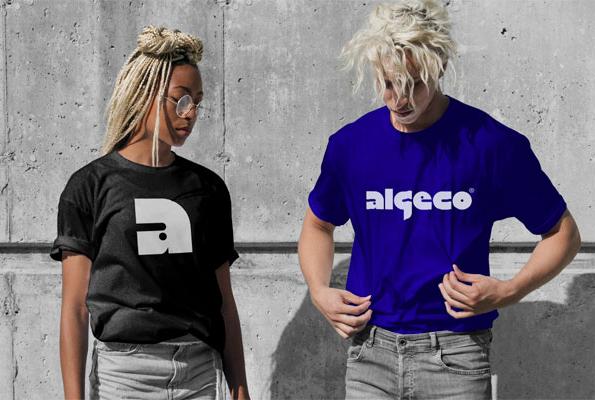
The Algeco Logo, a monument of our industrial heritage
After the birth of Algeco, the evolution of modular and emblematic products of the brand, Algeco France approaches the company logotype. It's simple: it's almost "intangible"! Yes, since its creation, the major visual identity of the brand has changed only slightly. Here are the explanations of Jérémie Fesson, co-founder of Graphéine, a brand identity advisory agency and Creative Director at the Paris office.
"Highlighting the modular character of the Algeco logo. By breaking down the vocabulary of letter shapes, we discover that the letter C is the basic module for drawing each letter." © (Illustrations : Graphéine)
This custom character belongs only to Algeco. He retranscribes his values to the letter, and that immediately. Where Nike uses its "Swoosh" emblem to complement its brand message, Algeco says it all by "simple" formatting its name.
A good logo is above all a form that lasts over time. It is also distinguished by a distinctive aesthetic.
"The modular typographic style has a big comeback with the logo of the next Hollywood adaptation of Frank Herbert's science fiction novel "Dune" (written in 1965). The logo uses a close basic module in a "light" version. Note that NASA's famous 'worm' logo also has a quasi-modular structure that gives it an experimental and futuristic style." ©
In this sense, we are currently witnessing a "renaissance" of logotypes designed in the 70s. They temporarily disappeared in the 2010s as digital profoundly transformed the economy and consumer habits. This phenomenon has only recently amplified after a wave of "Blanding" (for "sanitized branding") in which many brands seemed to lose their soul by changing the bold historical logotype to a uniform typographic style and "sans serif".
Interchangeable and neutral, this has been the logo since the early 2020s. It seems that today many brands are revising their copy and returning to identities that correspond to a certain "golden age" associated with the 70s. Returning to a period synonymous with prosperity for an anxious new generation struggling to project itself into the future with ecological and pandemic danger: nothing more natural!

Thanks to Jérémie Fesson for his refined analysis of this logo of which we are so proud. Take the opportunity to discover Graphéine, an agency also unlike any other, at the forefront of brand identity.






